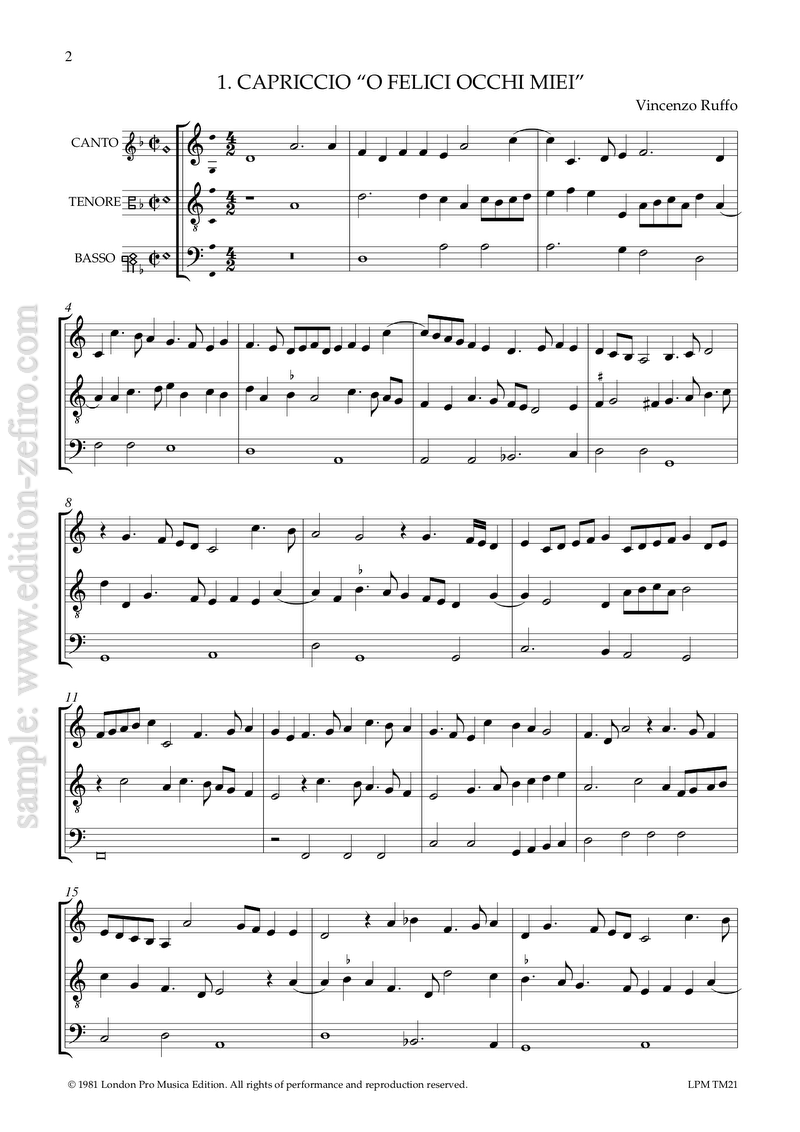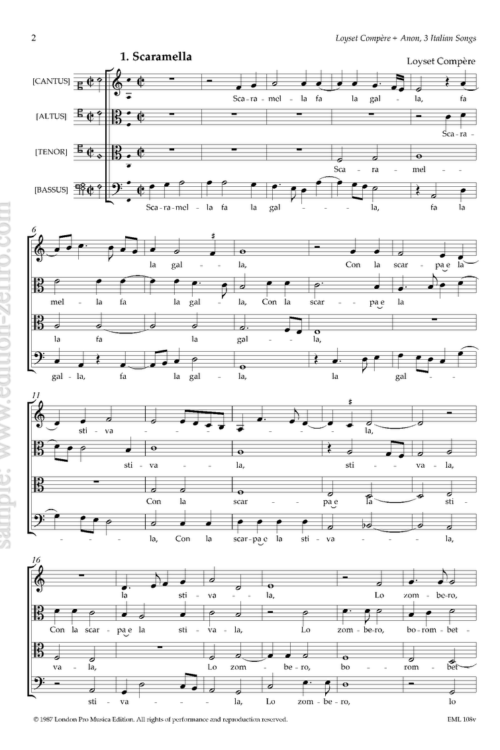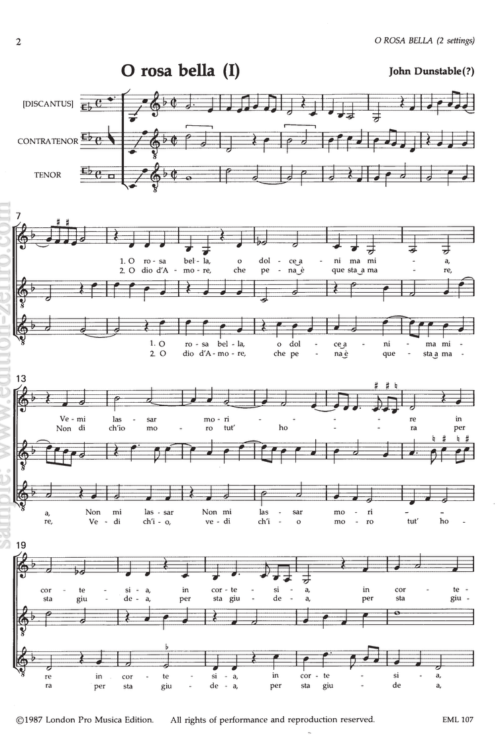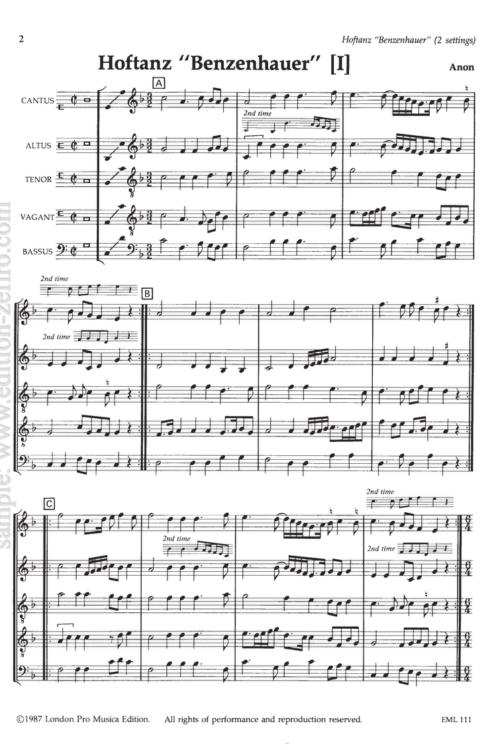In this collection two of the three capprici are based on the well-known madrigal O felici occhi miei (the piece on which Ortiz composed divisions), and the third on the dance tune La gamba.:
- a ricercar (Adrian Willaert)
- an attractive fantasy on La Sol Fa Re Mi (Giuliano Tiburtino)
- three capricci (Vicenzo Ruffo)
These pieces, with the exception of the Willaert ricercar, are all based on some kind of pre-existent material. In the Ruffo pieces one part has a cantus firmus throughout, while in the Tiburtino a short melodic formula pervades all three parts. The distinction in the sixteenth century between a capriccio on the one hand, and a ricercar or fantasia on the other, is not entirely clear, but typically the former is based on a borrowed melody, or attempts to pursue a single musical problem or idea throughout the piece, while the latter tends to consist of a series of imitative points. Often there seems to be an element of surprise, or even of the bizarre, in the capriccio: where an older piece is used as a basis for the composition, there is often an attempt to create a mood or style that is radically different in some way from the model. To a considerable extent Vincenzo Ruffo’s Capricci of 1564 fall into this definition: many of the pieces based on madrigals or chansons use the bass part of the model, allowing the composer a great deal of freedom in the upper parts.






